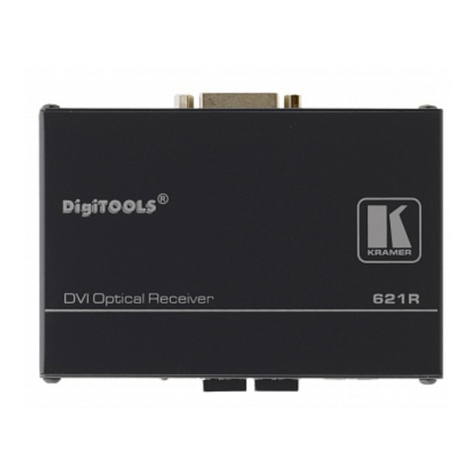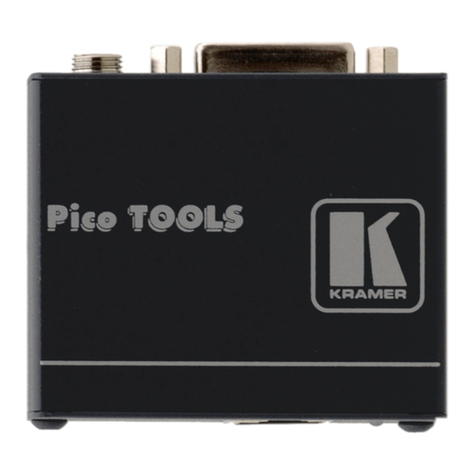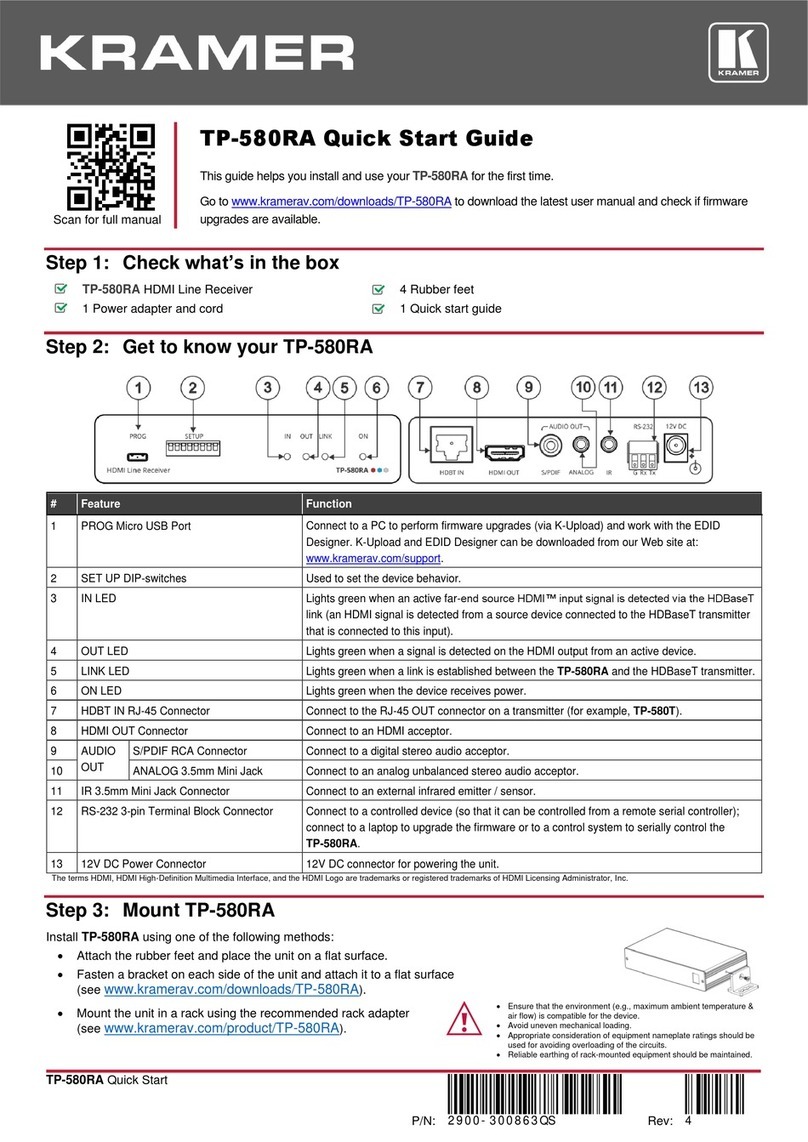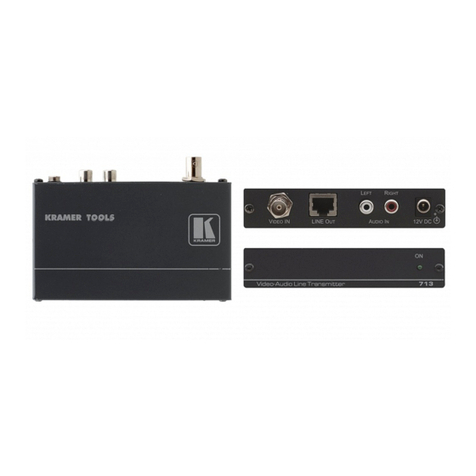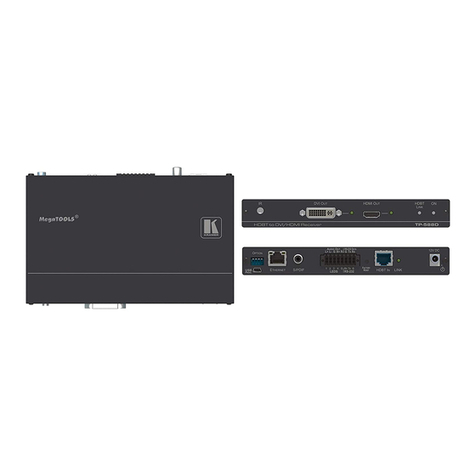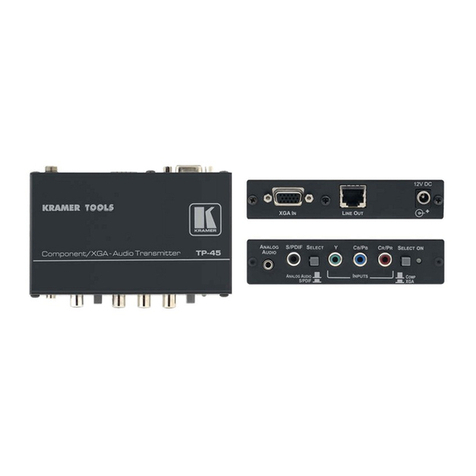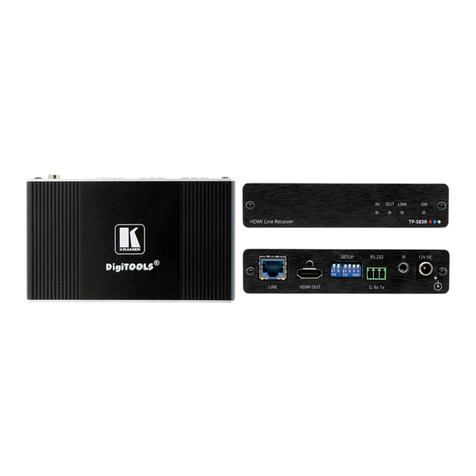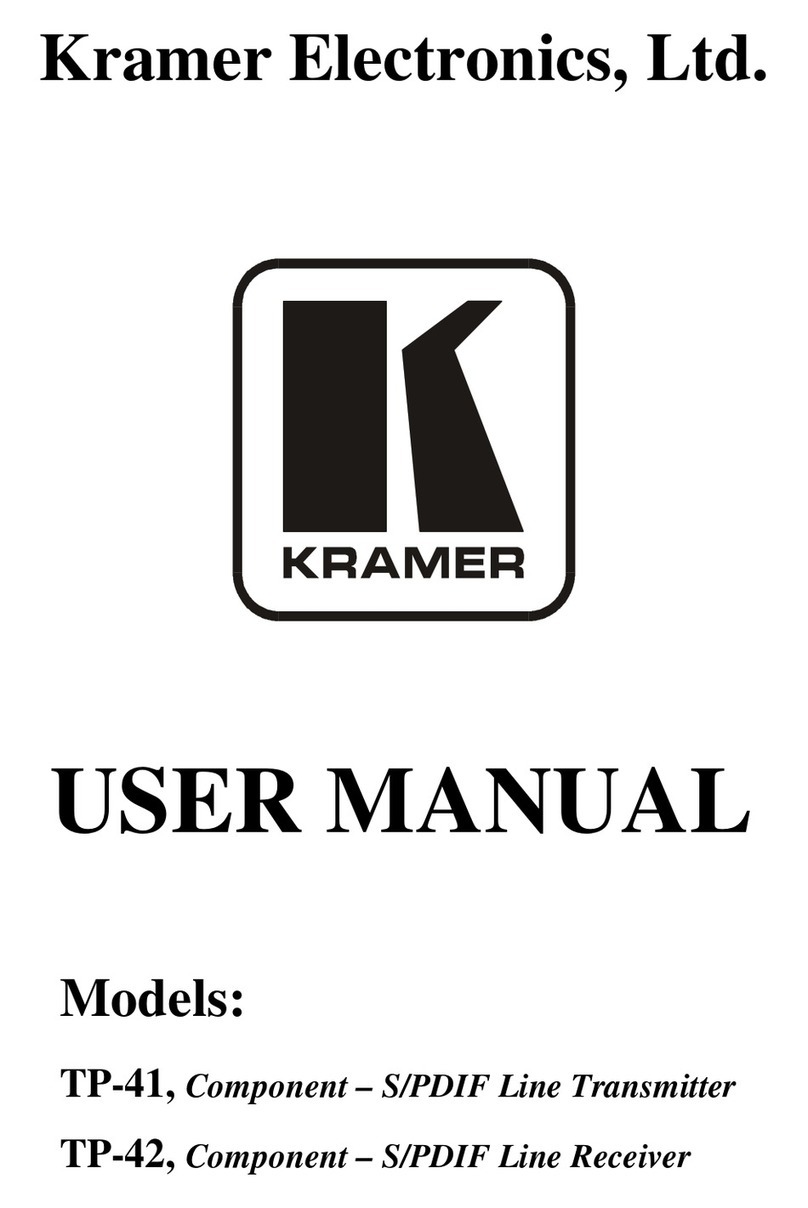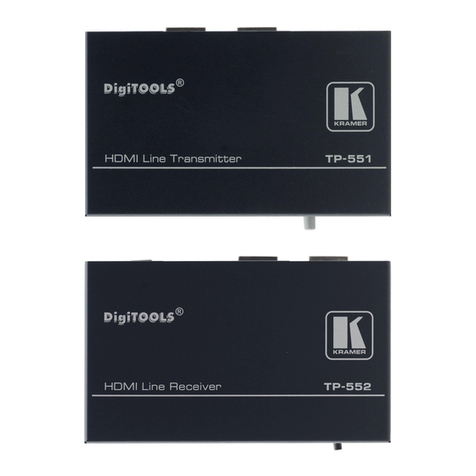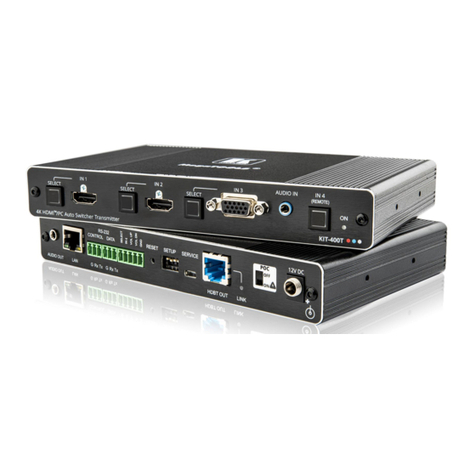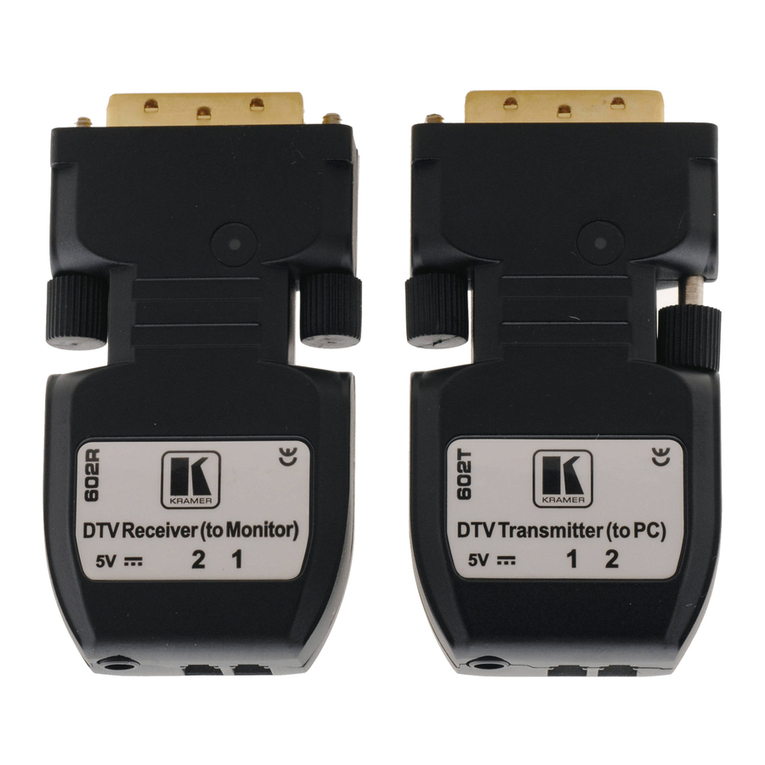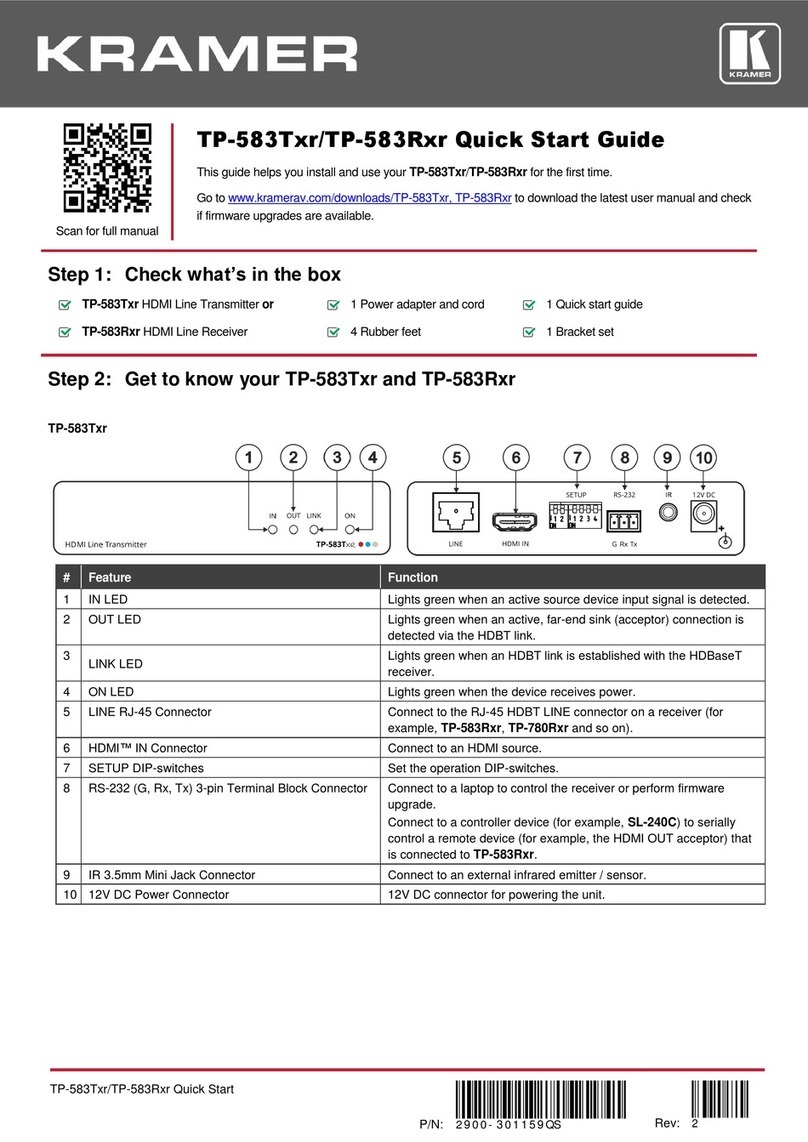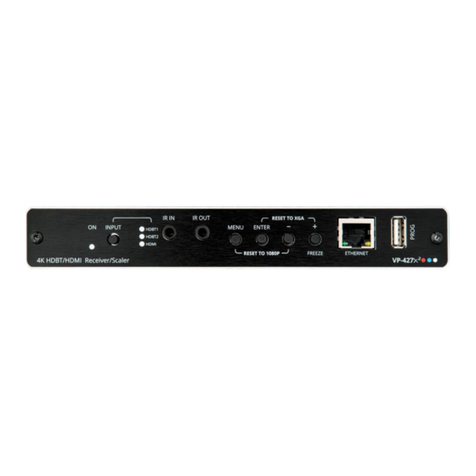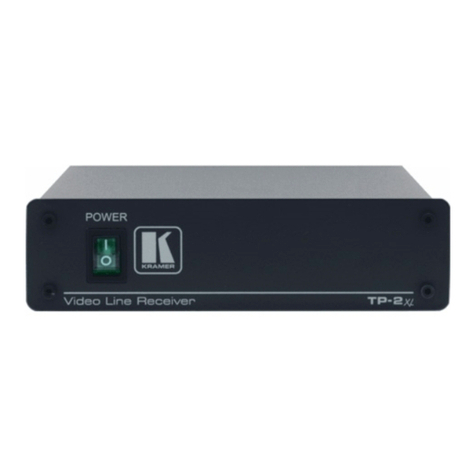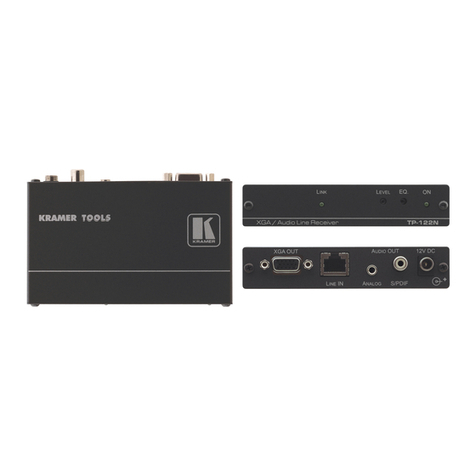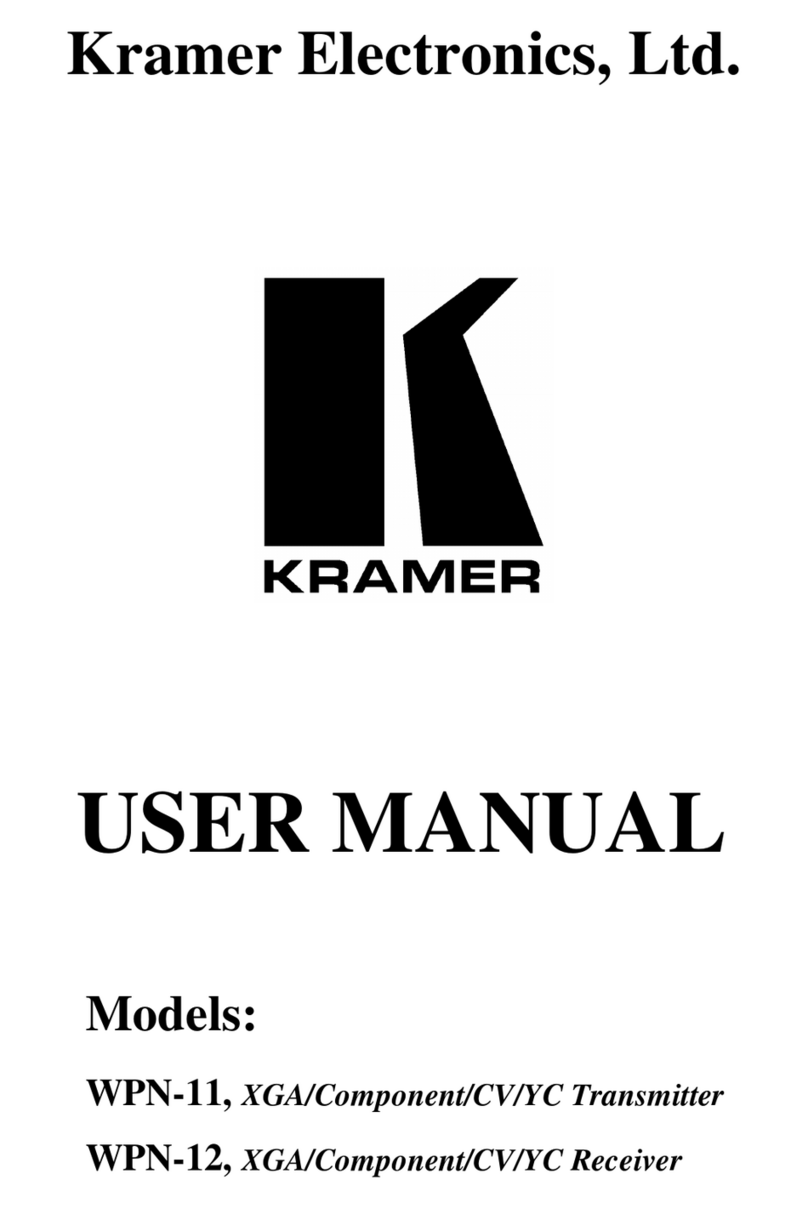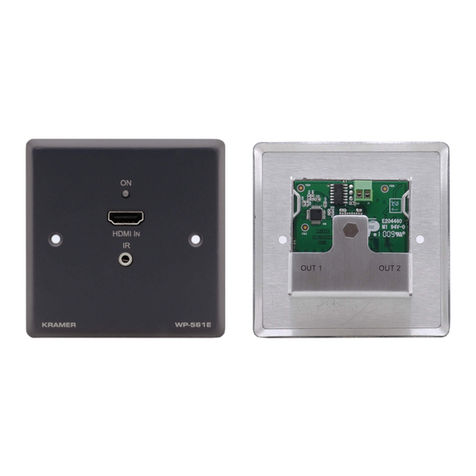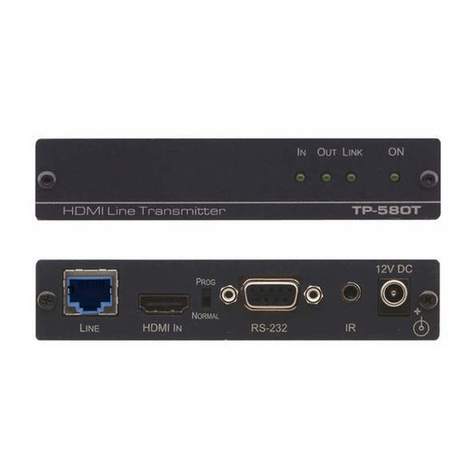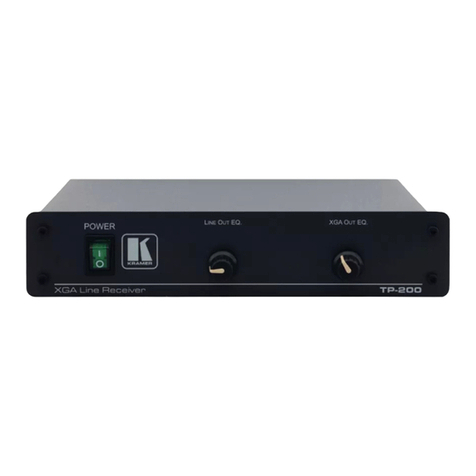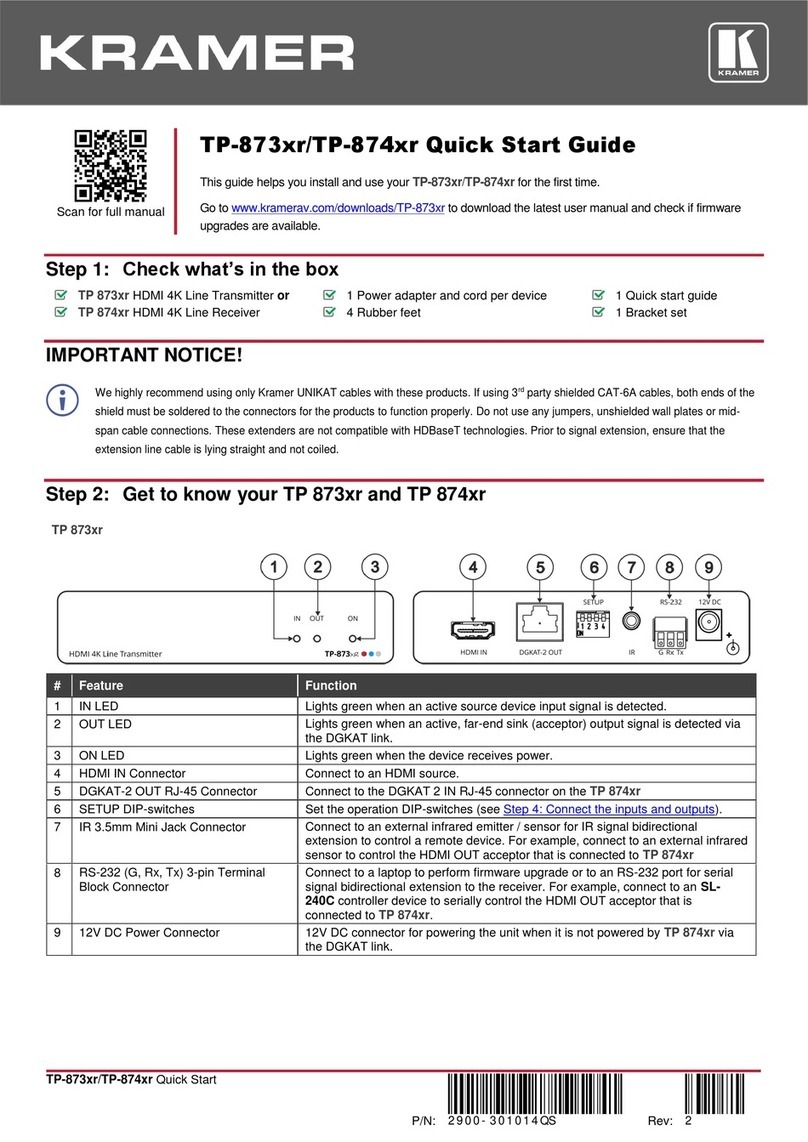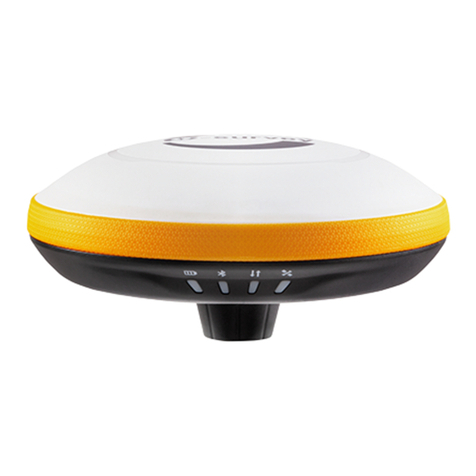1 Introduction
Welcome to Kramer Electronics (since 1981): a world of unique, creative and
affordable solutions to the infinite range of problems that confront the video, audio
and presentation professional on a daily basis. In recent years, we have redesigned
and upgraded most of our line, making the best even better! Our 500-plus
different models now appear in 8 Groups
1
, which are clearly defined by function.
Congratulations on purchasing your Kramer TOOLS: TP-104, TP-104(HD)
XGA Line Transmitter / DA, and/or TP-105, TP-105(HD), CAT5 Line Driver
/ DA, and/or TP-121 XGA / Audio Line Transmitter, and/or TP-122 XGA /
Audio Line Receiver, and/or TP-123, XGA / Audio / Data Line Transmitter,
and/or TP-124,XGA / Audio / Data Line Receiver, which are ideal for:
Presentation and multimedia applications
Long range graphics distribution for schools, hospitals, security, and
stores
The package includes one or more of the following Kramer TOOLS:
TP-104/TP-104(HD), TP-105/TP-105(HD), TP-121, TP-122, TP-123,
or TP-124
Power adapter (12V DC Input) and this user manual
2
2 Getting Started
We recommend that you:
Unpack the equipment carefully and save the original box and packaging
materials for possible future shipment
Review the contents of this user manual
Use Kramer high performance high resolution cables
3
2.1 Quick Start
The quick start charts summarize the basic setup and operation steps of the
TP-121/TP-122 and TP-123/TP-124, and of the TP-104 and TP-105.
1 GROUP 1: Distribution Amplifiers; GROUP 2: Video and Audio Switchers, Matrix Switchers and Controllers; GROUP 3:
Video, Audio, VGA/XGA Processors; GROUP 4: Interfaces and Sync Processors; GROUP 5: Twisted Pair Interfaces;
GROUP 6: Accessories and Rack Adapters; GROUP 7: Scan Converters and Scalers; and GROUP 8: Cables and Connectors
2 Download up-to-date Kramer user manuals from the Internet at this URL: http://www.kramerelectronics.com
3 The complete list of Kramer cables is on our Web site at http://www.kramerelectronics.com
